Un bassin à koïs est bien plus qu'un simple ornement : c'est une tapisserie vivante aux couleurs changeantes, gracieuse et paisible. Mais sous cette surface sereine se cache un danger : chaque ondulation peut signifier qu'un prédateur traque sa proie. Si des poissons ont disparu ou que vous avez remarqué une activité suspecte au bord de l'eau, vous vous demandez probablement comment protéger vos koïs. Dans ce guide complet, nous identifierons les menaces potentielles, décrirons des stratégies de défense efficaces et vous indiquerons des solutions écologiques, comme des éclairages solaires pour bassin et des fontaines à eau solaires , qui s'intègrent parfaitement à votre paysage tout en protégeant vos poissons.
1. Prédateurs courants des poissons koï : qui en a après vos poissons ?

Les koïs sont au sommet de la chaîne alimentaire dans un bassin équilibré, même si des menaces introduites peuvent perturber cet équilibre. Parmi les principaux prédateurs des koïs, on trouve :
Oiseaux de proie
- Hérons : Immobiles avant de frapper, ils peuvent attraper des carpes koï mesurant jusqu'à 30 cm de long.
- Martins-pêcheurs et cormorans : plongeurs rapides qui ciblent les carpes koï plus petites ou nageant peu profondément.
Mammifères nocturnes
- Ratons laveurs et visons : leurs mains habiles leur permettent de pêcher à la main, généralement la nuit.
- Renards et chats du quartier : des chasseurs opportunistes patrouillant les bords des étangs.
Chasseurs aquatiques
- Gros poissons : la perche, le bar et le poisson-chat, éventuellement introduits involontairement, peuvent rapidement épuiser les stocks de carpes koï, en particulier les juvéniles.
- Tortues et serpents : prédateurs embusqués qui se cachent dans la végétation ou les rochers.
Amphibiens et insectes
- Plus rarement, les coléoptères aquatiques géants et les grenouilles-taureaux peuvent s'attaquer aux petits alevins.
Fait : Un héron peut dévorer 3 à 5 koïs par visite. Savoir à qui l'on a affaire est la première étape essentielle pour une protection efficace.
2. Comment protéger les carpes koï des prédateurs : 7 méthodes efficaces

Une défense multicouche est votre meilleure option. Combinez barrières physiques, dissuasifs comportementaux et contrôles environnementaux pour garder une longueur d'avance sur les prédateurs des carpes koï.
1. Filet d'étang
Couvrez votre bassin d'un filet à mailles fines résistant aux UV pour éloigner les oiseaux et les prédateurs terrestres. Lestez les bords sous des pierres ou des briques enterrées pour empêcher les ratons laveurs de forcer le filet.
2. Zones refuges sous-marines
Ajoutez des grottes rocheuses, du bois flotté coulé ou des tubes de dissimulation en PVC spécialement conçus avec une profondeur minimale de 18 pouces. Des groupes de plantes épais, tels que des nénuphars ou des juncus, fournissent de l'ombre et une couverture naturelles.
3. Systèmes d'arrosage activés par le mouvement
Placez des capteurs le long du bord de l'étang pour déclencher des jets d'eau aléatoires. Ces jets effraient les mammifères nocturnes nuisibles (ratons laveurs, visons) sans nuire à la faune.
4. Leurres effrayants et surfaces réfléchissantes
Utilisez des leurres de hérons et de hiboux, associés à des moulins à vent réfléchissants ou à des CD suspendus. Repositionnez-les et faites-les tourner chaque semaine : les prédateurs comprennent vite que certains objets sont inoffensifs.
5. Dégagez le périmètre
Maintenez un espace libre de 90 à 150 cm autour de votre bassin. Tondez les herbes hautes, éliminez les déchets et les débris, et gardez les chemins dégagés pour améliorer la visibilité et réduire la présence de prédateurs.
6. Lampes solaires pour bassin
Les bassins éclairés découragent les attaques nocturnes en révélant les mouvements. Les lampes solaires Poposoap pour bassin sont équipées de trois têtes, de 12 modes de couleur et de batteries internes de 2 200 mAh offrant jusqu'à 8 heures d'éclairage à pleine charge. Leur design en forme de projecteur produit une lumière large et uniforme, rendant dangereux l'accès aux carpes koï à la faveur de l'obscurité.
7. Agitation de l'eau à énergie solaire
Les surfaces planes invitent à la précision des frappes ; l'eau ondulante perturbe la perception de la profondeur par les prédateurs. La fontaine à eau solaire Poposoap brasse non seulement 80 à 680 gal/h pour l'agitation de la surface, mais oxygéne également votre bassin naturellement. Leurs kits pratiques, tout-en-un, comprenant panneau solaire et pompe, témoignent de l'engagement de Poposoap pour une conception simple et écologique.
3. Conseils bonus : Aménagement paysager pour la prévention des prédateurs

Un aménagement paysager bien pensé peut renforcer vos défenses :
- Bordures abruptes et nettes : Les bordures peu profondes offrent des zones de pataugeoire faciles. Construisez plutôt des murets de pierre verticaux ou inclinés à 45°. Pour l'esthétique, utilisez des parements de pierre naturelle qui s'harmonisent avec votre jardin.
- Structures de bassin surélevées : Construisez des parois de bassin surélevées de 15 à 20 cm par rapport au sol. Cette hauteur éloigne les renards et les visons et améliore la visibilité.
- Plantations et barrières périmétriques : Des haies épaisses (buis, bambous, etc.) ou de hautes graminées ornementales (environ 1,20 m) forment une barrière physique et visuelle. Associez-les à des clôtures basses ou à des treillis décoratifs pour empêcher les prédateurs de grimper.
- Éclairage et son intégrés : un éclairage doux du chemin et un son ambiant du paysage (comme le bruissement des carillons éoliens) effraieront la faune méfiante avant qu'elle n'atteigne le bord de l'eau.
4. Entretien et changements saisonniers
L'activité des prédateurs atteint généralement son maximum aux périodes de migration et de reproduction. Maintenez des défenses optimales pour votre étang :
- Inspection mensuelle du filet : inspectez-le pour déceler tout affaissement ou déchirure après les tempêtes et éliminez les débris qui pourraient alourdir le filet.
- Entretien des batteries : Nettoyez les panneaux solaires tous les mois et changez les batteries rechargeables tous les 2 à 3 ans pour un fonctionnement continu.
- Préparation hivernale : Dans les climats froids, retirez les filets à neige pour laisser passer la neige, puis remettez-les en place au début du printemps. Réglez l'éclairage à l'aide de minuteries en fonction des changements d'heures.
- Surveillance de la qualité de l'eau : Une eau bien oxygénée gardera les koïs en bonne santé et les empêchera de se bloquer sur les bords du bassin. Entretenez régulièrement les filtres et testez le pH, l'ammoniac et les nitrates de façon saisonnière.
5. Recommandations de produits
Choisir un équipement de haute qualité et spécialement conçu simplifie la sécurité de vos carpes koï :
Lampes solaires pour bassin Poposoap
- Construction : Projecteurs robustes en ABS enveloppant des lampes à trois têtes avec batteries rechargeables intégrées.
- Options d'éclairage : Fournit 12 couleurs unies, un cycle de couleurs automatique et trois niveaux de luminosité de lumière blanche.
- Avantages : Éclaire jusqu'à 10 pi², repousse les prédateurs nocturnes et rehausse la beauté de votre étang - aucun câblage ni alimentation externe n'est nécessaire.
Fontaine à eau solaire Poposoap
- Conception tout-en-un : panneau solaire et pompe intégrés - fonctionne entièrement à la lumière du soleil, avec des batteries de secours en option si vous le souhaitez.
- Performances : Les modèles varient de 80 à 680 GPH pour s'adapter à tout, des petits étangs d'arrière-cour aux plus grands plans d'eau.
- Avantages : Le mouvement constant de l’eau déroute les prédateurs, augmente l’oxygénation et produit des sons d’eau apaisants, le tout dynamisé de manière durable.
Ces produits reflètent l'engagement de Poposoap à fournir des produits faciles à utiliser et respectueux de l'environnement qui ajoutent beauté et sécurité à votre jardin.
6. FAQ : Protection des bassins à carpes koï contre les prédateurs
Q : Les koïs peuvent-ils être stressés par un éclairage continu ?
A : Des lumières d’étang stratégiquement positionnées, dirigées loin des cachettes et sur des minuteries, réduisent le stress et contribuent à leur sécurité.
Q : À quelle fréquence dois-je déplacer les leurres ?
R : Déplacez-les tous les 5 à 7 jours. Les prédateurs s'habituent rapidement aux dispositifs de dissuasion fixes.
Q : Les fontaines à eau à énergie solaire fonctionnent-elles bien dans les climats nuageux ?
R : Les modèles Poposoap avec batterie de secours fonctionnent pendant 6 heures avec 4 à 6 heures d'ensoleillement. Même un ensoleillement partiel produit un flux bénéfique.
7. Laissez vos carpes koï prospérer — sans crainte

Un bassin à koïs à l'abri des prédateurs exige du travail, plusieurs niveaux de protection et un choix judicieux des produits. En connaissant bien les prédateurs des koïs et en suivant les stratégies présentées, ainsi qu'en utilisant des lampes solaires Poposoap et une fontaine à eau solaire respectueuses de l'environnement, vous créerez un havre de paix où vos koïs s'épanouiront. Adoptez ces suggestions pour transformer votre bassin en une oasis de sérénité et de détente, idéale de jour comme de nuit.


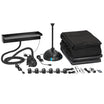
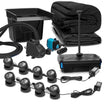
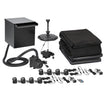
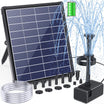
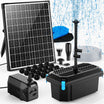
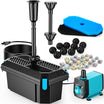
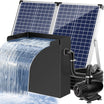
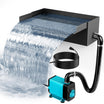

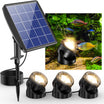
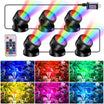

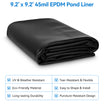
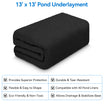

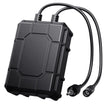
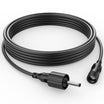
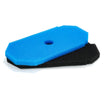

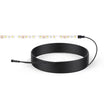




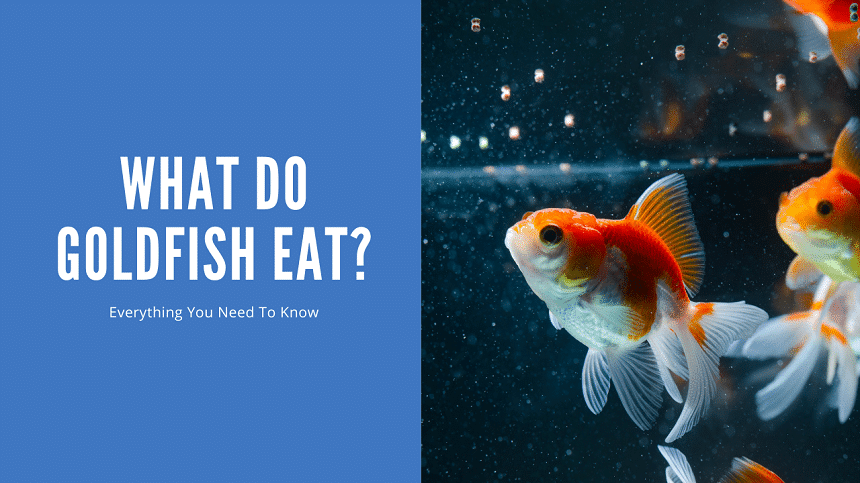
Laisser un commentaire
Tous les commentaires sont modérés avant d'être publiés.
Ce site est protégé par hCaptcha, et la Politique de confidentialité et les Conditions de service de hCaptcha s’appliquent.